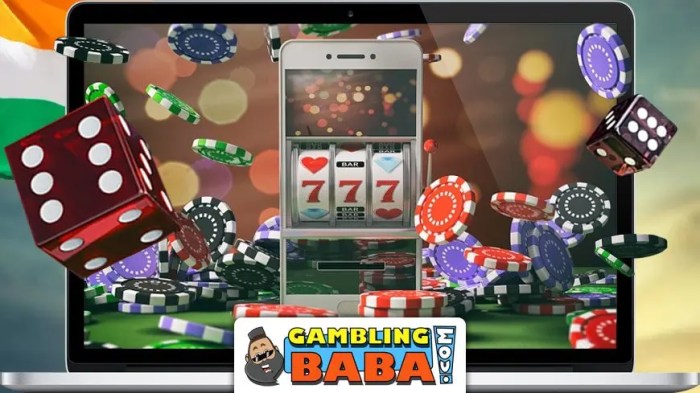Games to earn money without investment, also known as Play-to-Earn (P2E) games, have emerged as a captivating new frontier in the gaming industry. These innovative games offer players the opportunity to earn real-world rewards by participating in virtual worlds, challenging traditional gaming models and attracting a diverse audience seeking financial opportunities within the digital realm.
This guide delves into the world of P2E games, exploring their mechanics, earning methods, and potential risks, providing insights to navigate this evolving landscape.
P2E games have gained significant traction in recent years, fueled by the growing popularity of blockchain technology and the emergence of cryptocurrencies. They often utilize non-fungible tokens (NFTs) to represent in-game assets, allowing players to own and trade digital items for real-world value.
The potential to earn money through gameplay has attracted millions of players worldwide, transforming gaming from a purely recreational activity into a potential source of income.
Understanding Play-to-Earn (P2E) Games
Play-to-earn (P2E) games have emerged as a new and exciting facet of the gaming industry, offering players the potential to earn real-world rewards for their in-game activities. These games differ significantly from traditional games, where players primarily engage for entertainment and enjoyment.P2E games are built on blockchain technology, allowing players to own and trade in-game assets as non-fungible tokens (NFTs).
These assets can be used to generate in-game resources, complete tasks, or participate in competitive events, ultimately leading to rewards that can be converted into real-world currencies.
Benefits of P2E Games
The potential benefits of P2E games are numerous, particularly for players in developing countries or those seeking alternative income streams.
- Financial Empowerment:P2E games provide an opportunity for players to earn income by playing, potentially supplementing their existing income or providing a source of revenue for those without traditional employment.
- Asset Ownership:Players own their in-game assets, which can be traded or sold on marketplaces, allowing them to monetize their time and effort invested in the game.
- Community Engagement:P2E games often foster strong communities among players, as they share a common interest in earning rewards and participating in the game’s economy.
Risks Associated with P2E Games, Games to earn money without investment
While P2E games offer potential benefits, it’s essential to be aware of the inherent risks associated with this emerging gaming model.
- Volatility:The value of in-game assets and cryptocurrencies can fluctuate significantly, leading to potential losses for players.
- Game Sustainability:The long-term sustainability of P2E games depends on factors such as player engagement, token economics, and developer support. A decline in any of these areas could impact the game’s economy and player rewards.
- Scams and Fraud:As with any emerging technology, there is a risk of scams and fraudulent activities within the P2E gaming space.
Examples of Popular P2E Games
P2E games have gained traction across various genres, with popular examples including:
- Axie Infinity (Play-to-Earn, Role-Playing):A popular blockchain-based game where players collect, breed, and battle digital creatures called Axies. Players can earn rewards in the form of the game’s native token, AXS.
- The Sandbox (Play-to-Earn, Sandbox):A virtual world where players can create, own, and trade digital assets, including land, avatars, and games. Players can earn rewards by participating in the game’s economy.
- Splinterlands (Play-to-Earn, Trading Card):A collectible card game where players battle each other using digital cards. Players can earn rewards in the form of the game’s native token, SPS, and other in-game assets.
Types of Games to Earn Money Without Investment
Play-to-Earn (P2E) games offer players the chance to earn money without investing capital. These games are built on blockchain technology, enabling players to own and trade in-game assets, such as characters, items, and land. While some P2E games require initial investments, several offer opportunities to earn without spending money.
Games with Tokenized Rewards
This category of P2E games rewards players with tokens that can be traded on cryptocurrency exchanges. These tokens represent a share in the game’s ecosystem and can be used for various purposes, such as purchasing in-game items or voting on governance proposals.
Players earn tokens by completing tasks, winning competitions, or participating in the game’s economy.
“These games often feature a native token that serves as the primary currency for transactions within the game’s ecosystem.”
For instance, Axie Infinity, a popular P2E game, uses the AXStoken for in-game purchases and governance. Players earn AXS by breeding and battling Axies, digital creatures that can be bought and sold on the marketplace.
NFT-Based Games
NFT-based P2E games utilize non-fungible tokens (NFTs) to represent unique in-game assets. Players can earn money by collecting, trading, or using these NFTs. NFTs are digital assets that are unique and verifiable, making them ideal for representing in-game items like characters, weapons, and land.
“NFT-based games leverage the unique properties of NFTs to create a secure and transparent ownership system for in-game assets.”
For example, The Sandbox, a virtual world game, uses NFTs to represent virtual land and other in-game assets. Players can purchase land, build experiences, and earn SAND tokens, the game’s native currency, by participating in the game’s ecosystem.
Games with In-Game Economies
These games create a thriving in-game economy where players can earn money by trading goods and services. Players can earn in-game currency by completing tasks, crafting items, or providing services to other players. This currency can then be exchanged for real-world money through various methods, such as in-game marketplaces or peer-to-peer trading.
“These games emphasize player interaction and collaboration, fostering a vibrant in-game economy where players can earn real-world value.”
For example, Splinterlands, a trading card game, allows players to earn DEC, the game’s native currency, by winning battles and completing quests. Players can then sell their DEC on cryptocurrency exchanges for real-world money.
Comparison of P2E Game Types
| Game Type | Strengths | Weaknesses ||—|—|—|| Tokenized Rewards | Potential for high earning potential | Volatility of cryptocurrency prices || NFT-Based Games | Ownership and tradability of in-game assets | High entry costs for some NFTs || In-Game Economies | Emphasis on player interaction and collaboration | Fluctuating in-game currency value |
Earning Methods in P2E Games

Play-to-earn (P2E) games offer a unique opportunity to earn money by playing games. These games typically involve digital assets that players can acquire, trade, and use to generate income. The earning methods in these games vary widely, ranging from completing simple tasks to participating in competitive tournaments.
Earning Methods in P2E Games
The earning methods in P2E games can be broadly categorized into three main categories:
- Completing Tasks and Quests: Players earn rewards for completing in-game tasks, quests, and challenges. These tasks can range from simple activities like collecting resources or defeating enemies to more complex missions that require strategic planning and teamwork.
- Winning Tournaments and Competitions: Players can earn rewards for winning tournaments and competitions.
These tournaments can be organized by the game developers or by third-party organizations. The rewards for winning tournaments can be substantial, particularly for high-level players who demonstrate exceptional skills.
- Trading In-Game Assets: Players can earn money by trading in-game assets on marketplaces.
These assets can include virtual items, characters, land, and other digital goods that have real-world value. The value of these assets can fluctuate based on market demand, scarcity, and other factors.
Potential Earning Potential of Each Method
The earning potential of each method depends on several factors, including the game, the player’s skill level, and the time invested.
- Completing Tasks and Quests: The earning potential from completing tasks and quests is generally modest. However, players can earn a consistent income by consistently completing tasks. For example, in Axie Infinity, players can earn a small amount of SLP (Smooth Love Potion) by completing daily quests.
The earning potential is further enhanced by participating in breeding and selling Axies, which can lead to higher earnings.
- Winning Tournaments and Competitions: Winning tournaments can lead to substantial earnings. However, the competition can be fierce, and players need to develop high-level skills to succeed.
The earning potential can vary depending on the prize pool and the number of participants.
- Trading In-Game Assets: Trading in-game assets can be highly profitable, but it also involves risk. The value of these assets can fluctuate significantly, and players need to have a good understanding of the market to make informed decisions.
For instance, in Decentraland, players can earn money by trading virtual land and other digital assets. The value of these assets can vary depending on the location, size, and other factors.
Earning Methods in P2E Games: Summary Table
| Method | Description | Earning Potential | Examples |
|---|---|---|---|
| Completing Tasks and Quests | Players earn rewards for completing in-game tasks, quests, and challenges. | Modest, but consistent. | Axie Infinity, The Sandbox, Decentraland |
| Winning Tournaments and Competitions | Players earn rewards for winning tournaments and competitions. | High, but requires high-level skills and competition. | Axie Infinity, Splinterlands, Gods Unchained |
| Trading In-Game Assets | Players earn money by trading in-game assets on marketplaces. | Highly profitable, but involves risk. | Axie Infinity, Decentraland, The Sandbox |
Conclusion: Games To Earn Money Without Investment

The world of Play-to-Earn gaming is dynamic and constantly evolving. While the potential for earning real-world rewards is alluring, it’s crucial to approach P2E games with a balanced perspective. Understanding the risks, researching thoroughly, and choosing reputable platforms are essential for a positive experience.
As blockchain technology and the metaverse continue to advance, P2E games are poised to play an increasingly significant role in the future of gaming and digital economies. By staying informed and embracing a strategic approach, players can navigate the opportunities and challenges presented by this innovative and exciting sector.
